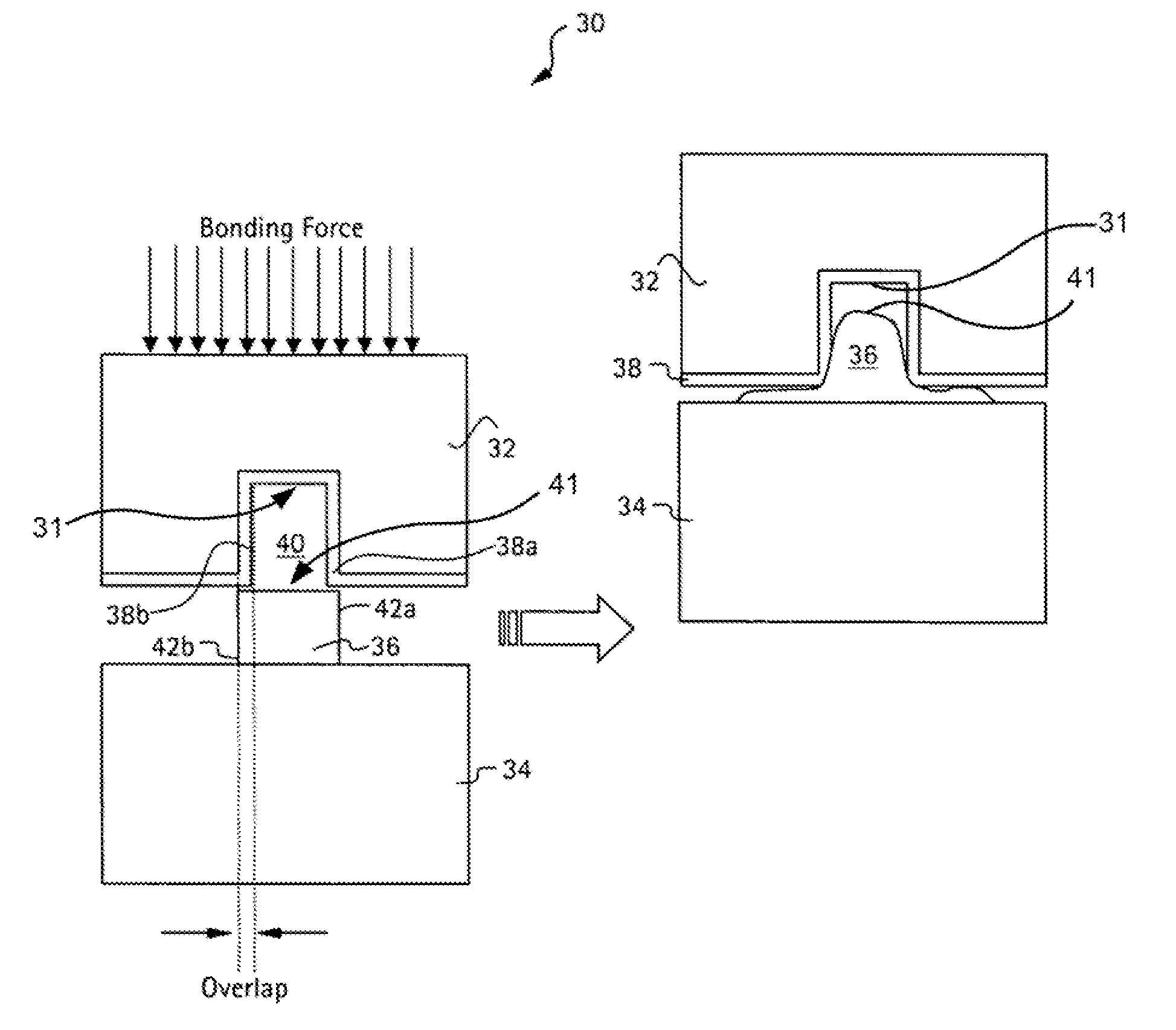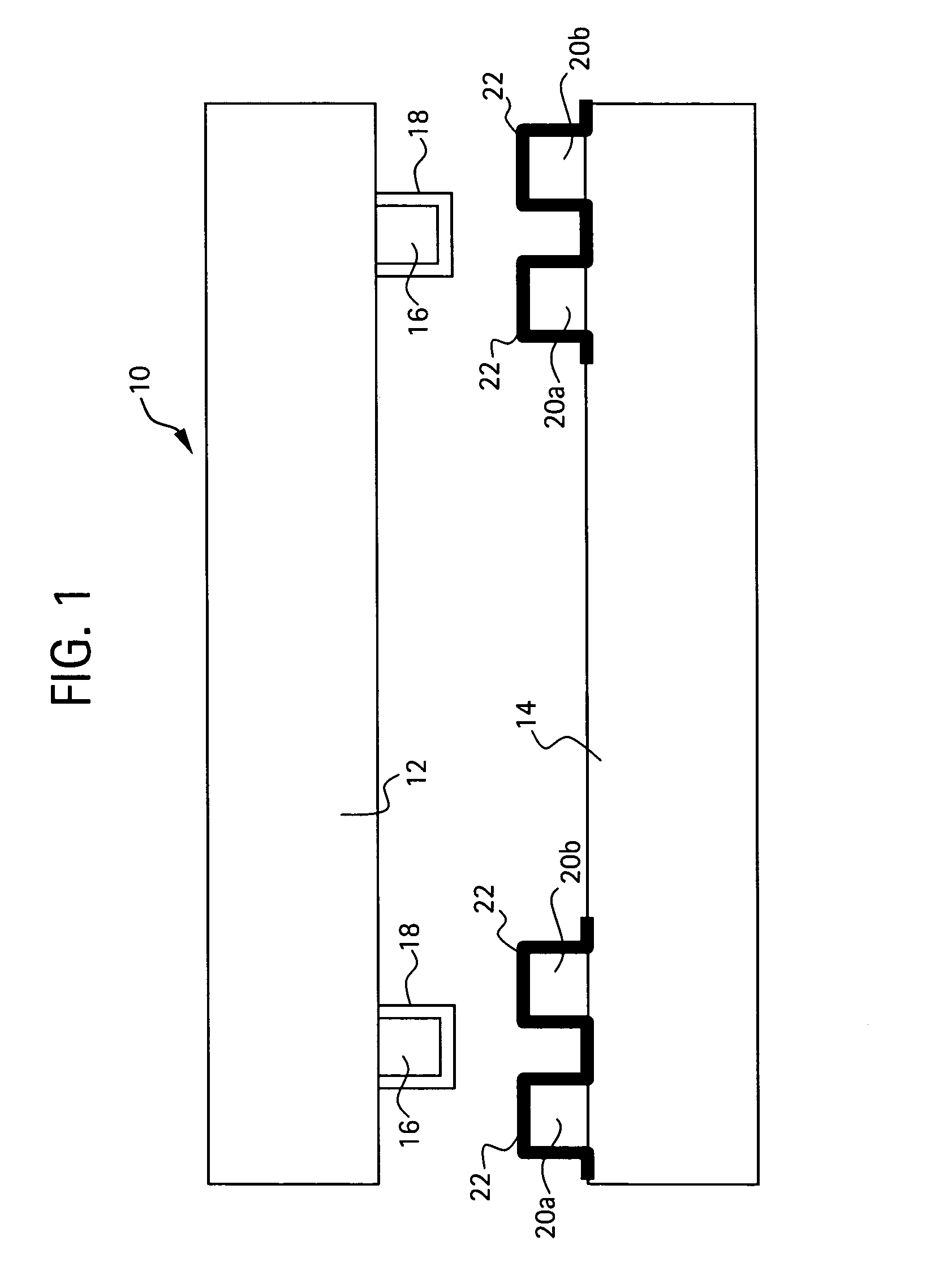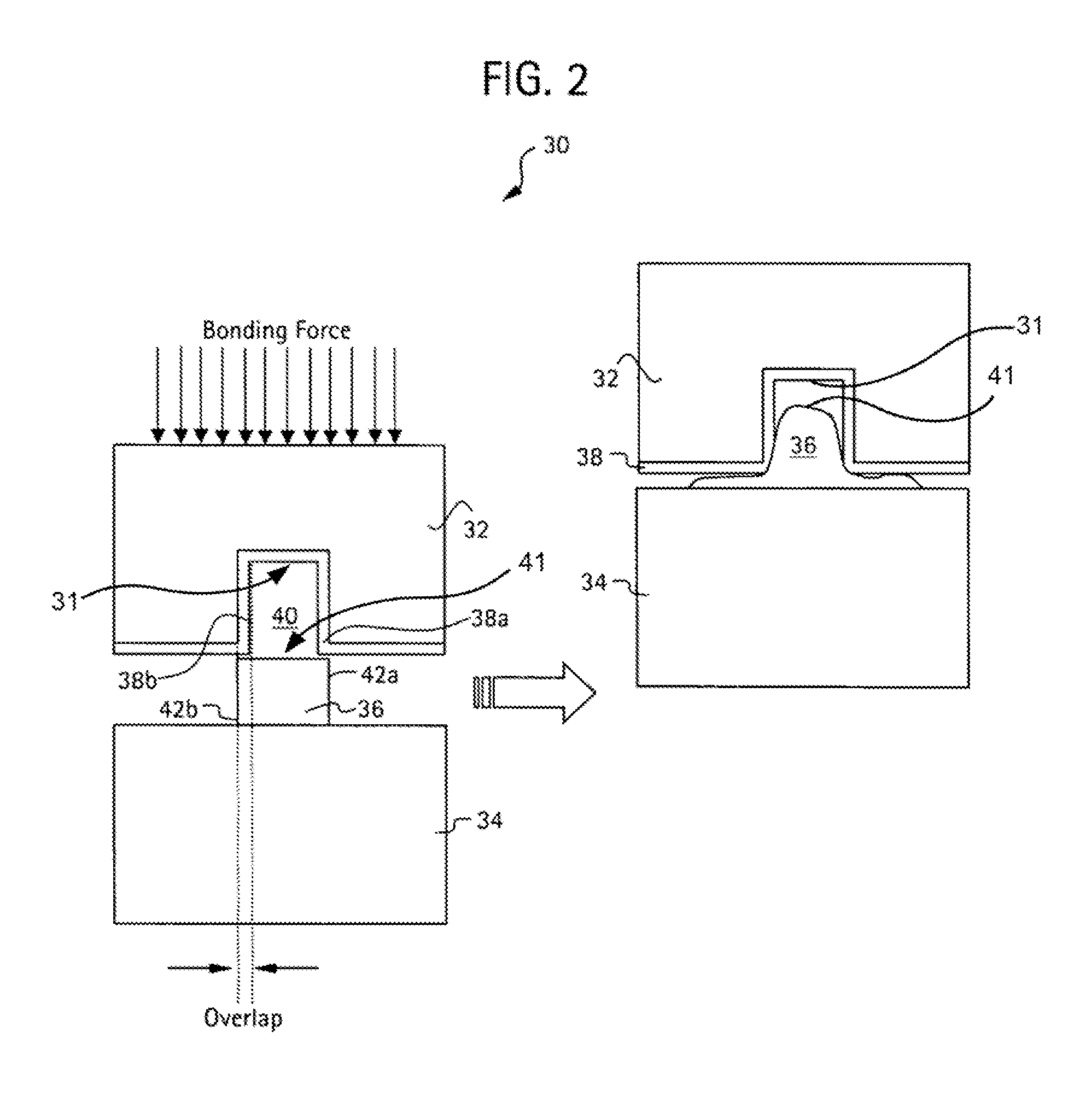Hermetically sealing using a cold welded tongue and groove structure
a tongue and groove, cold welding technology, applied in the direction of mechanical equipment, non-electric welding equipment, manufacturing tools, etc., can solve the problems of surface deformation, method may not be suitable or ideal for all sealing applications, and the surface fraction of newly exposed metal is not strong
- Summary
- Abstract
- Description
- Claims
- Application Information
AI Technical Summary
Benefits of technology
Problems solved by technology
Method used
Image
Examples
example 1
Tongue and Groove Hermetic Seal
[0199]A hermetic seal was made using a tongue and groove joint design. The seal was made by a compression cold welding process. FIG. 3 shows an SEM of the seal. The substrates are silicon (top) and alumina (bottom). The metals are gold (sputtered on silicon, sputtered then electroplated on alumina). The parts were bonded on an FC-150 flip chip aligner, which is a machine that provides accurate alignment in x,y,z and pitch, roll, and yaw. Once the parts were aligned, the FC-150 compressed the parts together and the cold weld bond was formed.
example 2
Variation of Feature Sizes and Metal Thickness Impact on Hermeticity
[0200]Several different joint designs were fabricated, using different feature sizes and metal layer thicknesses. The joints were compression cold welded, and the sealed joints were tested for leaks using either a dye penetrant test or a He leak detector depending on the part geometry. As shown in Table 1 below, the seal integrity was found to be independent of feature size and gold metal layer thickness over the ranges tested. Undetectable leak rates may leak below the leak detectors lower limit or less than 5e-11 atm*cc / sec.
[0201]
TABLE 1Comparison of Various Joint Seals - Leak TestJointRidgeRidgeJointSurfaceGrooveWidthHeightstructureMetalGrooveGrooveMetal(188)(190)MaterialThicknessWidthDepthThicknessOverlapLeak TestResultsμmμm—μmμmμmμmμm——14550Gold—135501021DyeLeak Tightpenetrant5050Silicon7805072DyeLeak Tightpenetrant6050Gold—4650114He LeakUndetectable6050Gold—5350107He LeakUndetectable6050Gold—5050110He LeakUnde...
example 3
Array of Microfabricated Cavities Having Individual Seal Features
[0202]Two silicon substrates were provided made with complementary cavities and seal features for compression cold welding. The seal features included ridges that were microfabricated onto / into one substrate, and matching grooves that were microfabricated onto / into the other substrate. A shallow, wide cavity was formed inside each groove and inside each ridge. FIGS. 27A-B show the resulting substrates and seal features.
PUM
| Property | Measurement | Unit |
|---|---|---|
| width | aaaaa | aaaaa |
| groove depth | aaaaa | aaaaa |
| height | aaaaa | aaaaa |
Abstract
Description
Claims
Application Information
 Login to View More
Login to View More - R&D
- Intellectual Property
- Life Sciences
- Materials
- Tech Scout
- Unparalleled Data Quality
- Higher Quality Content
- 60% Fewer Hallucinations
Browse by: Latest US Patents, China's latest patents, Technical Efficacy Thesaurus, Application Domain, Technology Topic, Popular Technical Reports.
© 2025 PatSnap. All rights reserved.Legal|Privacy policy|Modern Slavery Act Transparency Statement|Sitemap|About US| Contact US: help@patsnap.com



